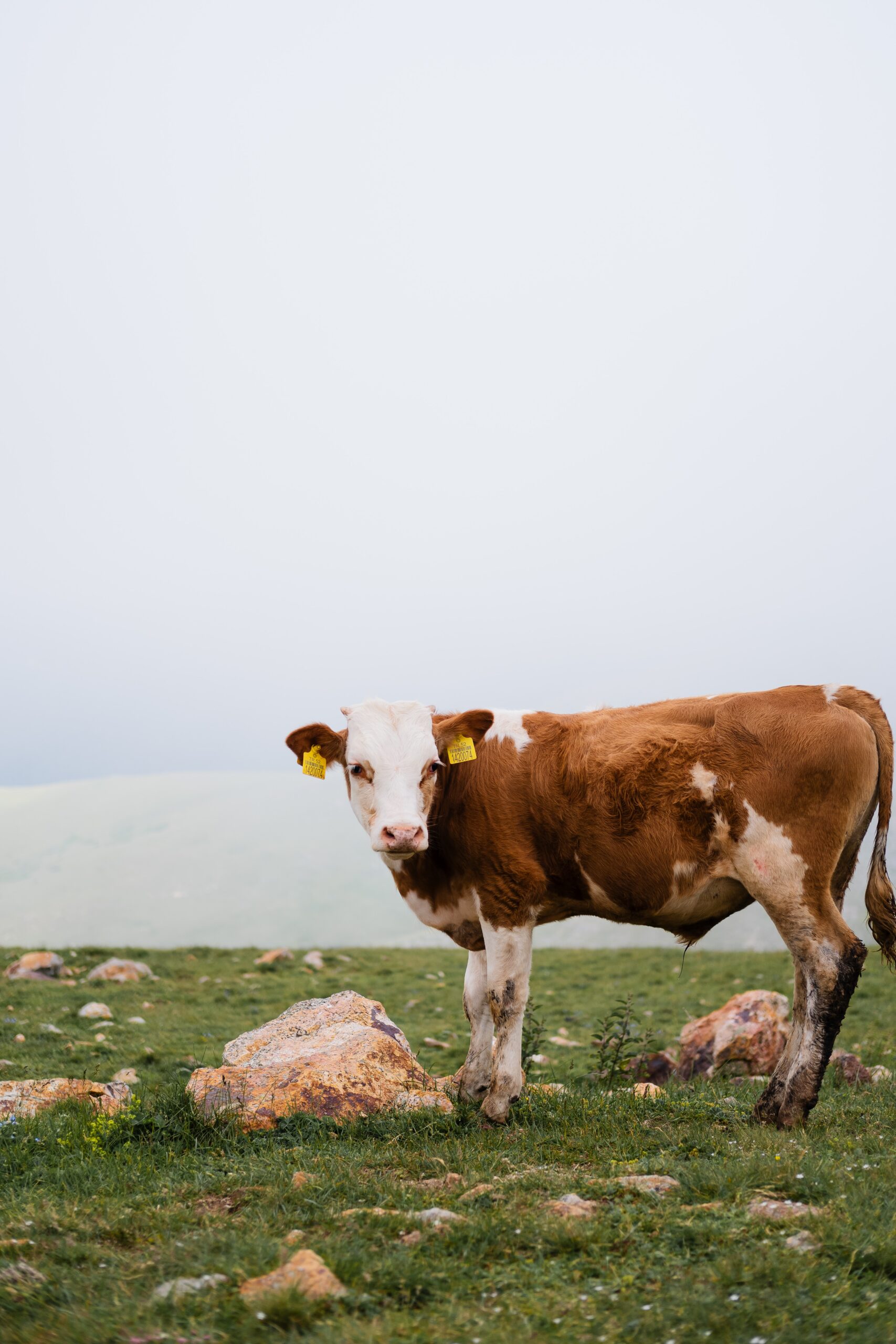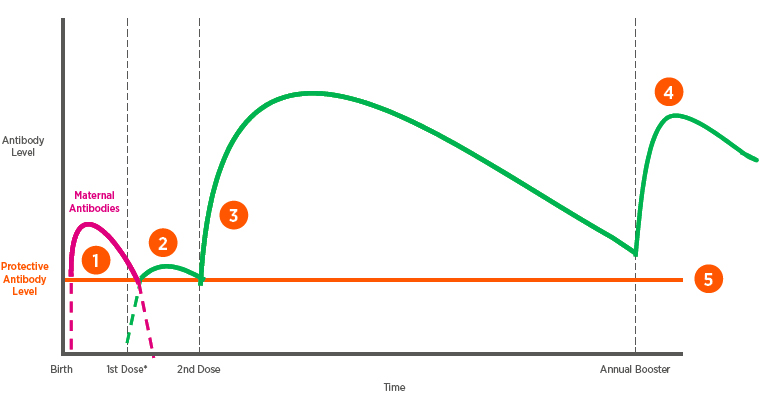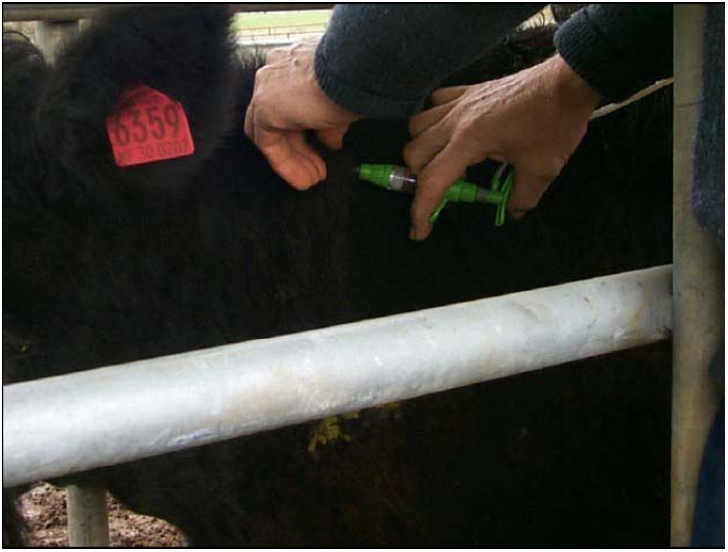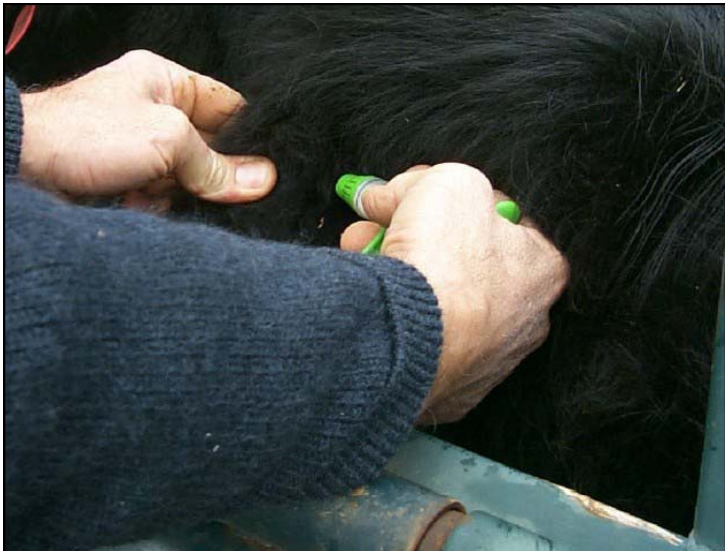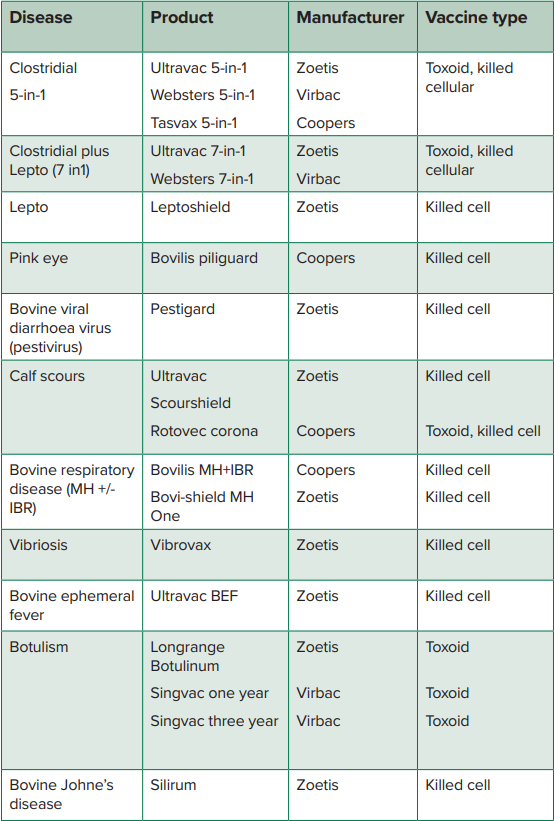Understanding Vaccinating and Immunity
Protecting your herd from common diseases involves a coordinated herd health program. A key component of most health programs is a strategic vaccination plan. In order to achieve the maximum level of protection a vaccine can offer, it is important to have an understanding of how vaccines function and how the immune system responds to a vaccine.
When an animal from a herd that has not been exposed to a specific pathogen (disease-causing agent) or a ‘naïve herd’ first comes into contact with a pathogen, and cannot generate an immune response quick enough, it will be susceptible to the disease. If conditions in the animal are suitable, the immune system will suppress the disease and over time will recover from infection. If an animal recovers from disease, specific cells in the immune system are programmed to remember and recognise parts of that specific pathogen known as antigens. An antigen is anything the body identifies as foreign or not part of itself such as a bacteria or virus. The body recognises these antigens as a threat, stimulating the development of antibodies which work to protect the body from the bacteria or virus.
How Vaccines Work
Vaccines expose an animal to a specific pathogen, misleading the body into thinking it has encountered the actual bacteria or virus creating memory cells for the antigens belonging to that specific pathogen. The body is then able to recognise when it is under attack from the same pathogen and will generate a quick response before the pathogen can cause disease and will therefore develop immunity.
Vaccines generally fall into two categories, live or killed vaccine.
Live Vaccines
Live vaccines include a small amount of bacteria or virus that has been modified so it does not cause clinical disease. The virus or bacteria in the vaccine can sometimes replicate in the body, supplying the vaccinated animal with a mild form of the disease to stimulate life-long immunity. Live vaccines usually require a single dose providing longer lasting immunity than killed vaccines. However, their potency is short lived and must be used soon after being mixed on-farm. Some live vaccines, if not used specifically as directed, can be harmful to pregnant cows and may cause abortions. Live vaccines should only be considered on properties where the disease is an issue. If animals from an uninfected property are vaccinated, this will introduce the virus on to the property. This may then require the establishment of a vaccination program to protect future stock, resulting in unnecessary costs to the producer.
Killed Vaccines
Killed vaccines are the most common form and do not require on-farm mixing and have minimal risk to pregnant animals. The vaccines described in this fact sheet are killed vaccines with most vaccines of this type requiring two doses. The first dose stimulates the antibodies however, the level produced is often small and protection generally only lasts a few weeks before immunity declines, hence a second vaccination is require to boost immunity (Figure 1). An annual booster every 12 months following is generally recommended to ‘top-up’ the immunity levels against a specific pathogen or disease.
Why Vaccinate
There are numerous cattle vaccines commercially available. Common diseases of cattle such as clostridial and reproductive diseases can cause significant animal health and animal welfare issues both incurring higher costs to manage and treat compared to using an initial preventative vaccination program. Points to consider before introducing a vaccination program include:
- Herd health history and the frequency of a particular disease in your herd.
- Disease occurrence in your area
- Management practices increasing risk of disease such as supplementary feeding, castration, dehorning.
- Cattle handling and vaccine storage facilities
- Personal capability of correctly administering vaccines
It is strongly recommended you consult with your local vet or animal health advisor before carrying out a vaccination program.
General Vaccination Principles
- Ensure you have safe cattle handing facilities such as a cattle crush or race where the animal can be restrained or allowed limited movement during the vaccination process.
- Handle and store vaccine according to label specifications.
- Ensure that vaccination equipment is clean and in good working order.
- Ensure needles are clean and sharp. Replace frequently.
- Blunt needles can lead to incorrect application of vaccine, impacting on the efficacy of the vaccine and increasing costs due to product wastage.
- Be sure to dispose of blunt needles correctly and with caution. Blunt needles should be placed in a container before disposing to prevent handling injuries.
- Needles and the vaccination site should be clean, free from mud, manure or blood to prevent infection and abscesses forming at the injection site.
- Ensure vaccination equipment is calibrated to the correct dosage according to label specifications.
- Most vaccination programs require two doses for the vaccine to be effective and establish immunity.
- Vaccination can be achieved via subcutaneous injection (under the skin), intramuscular injection (into the muscle) or by intravenous injection (into the vein).
- Vaccination technique will vary depending on the vaccine you are using.
- Subcutaneous injection is the most common method of vaccination.
Subcutaneous Injection (Under The Skin)
- This is a common delivery method for most vaccines.
- Ensure the injection site is clean before injecting.
- Disinfectants should not be used with live vaccines as they can inactivate the vaccine.
- A 16 gauge, 1 /2 inch needle is recommended.
- Ensure needles are clean and sharp.
- It is always best to discard the used needle after each vaccination session.
- The recommended injection site is high on the neck (Figure 2).
- To inject, lift a fold of loose skin with your free hand, and inject into the ‘tented’ skin (Figure 3).
- The needle should not pass through the fold of skin.
- If you are unsure if an animal has received the full dose, inject again.
Common Diseases to Vaccinate Against
Endemic diseases of livestock in Australia that vaccines can help prevent include:
- Bovine respiratory disease
- Clostridial diseases (including botulism)
- Cheesy gland
- Johne’s disease
- Leptospirosis
- Pestivirus
- Pinkeye
- Three day sickness (Bovine Ephemeral Fever)
- Vibriosis
When to Vaccinate
Clostridial Diseases
Clostridial diseases are caused by bacteria of the genus Clostridium. Clostridia are widespread in the environment and are normally found in soil and faeces. They form highly resistant spores that can survive in the environment for very long periods. They are also present in the gastrointestinal tract of healthy animals and as spores in their tissues. Not all species of clostridia cause disease, but those that do are usually fatal. Clostridial diseases include: Tetanus, Blackleg, Black Disease, Malignant Oedema, Pulpy Kidney and Botulism.
All animals are at risk of clostridial disease, but younger animals are at a higher risk than adults due to procedures such as marking, dehorning and castration creating an opportunity for clostridial bacteria to invade the body.
Vaccination program for the common Clostridial diseases:
- Vaccinate calves from 6 weeks of age. Two doses are required, 4 to 6 weeks apart. Give the first dose 4 to 6 weeks before marking and a booster at marking.
- Previously unvaccinated adult stock should receive two doses 4 to 6 weeks apart.
- An annual booster should be given to animals to ensure continued immunity.
- Annual boosters should be administered to cows 4 weeks prior to calving to ensure that immunity is passed onto the new born calf via colostrum.
For further information on vaccination programs for other common diseases in cattle visit here.
Additional Management
To get the most out of your vaccination program, most programs should be accompanied by strategic management practices depending on the disease you are vaccinating against. Management practices may include grazing strategies, nutrition management, animal husbandry procedures and biosecurity practices. For more information on biosecurity practices refer to the Stock Sense biosecurity resources.

Further Resources
Click here to download a PDF version.
For further information, please contact the VFF Stock Sense team on 1300 882 833 or by email [email protected]
